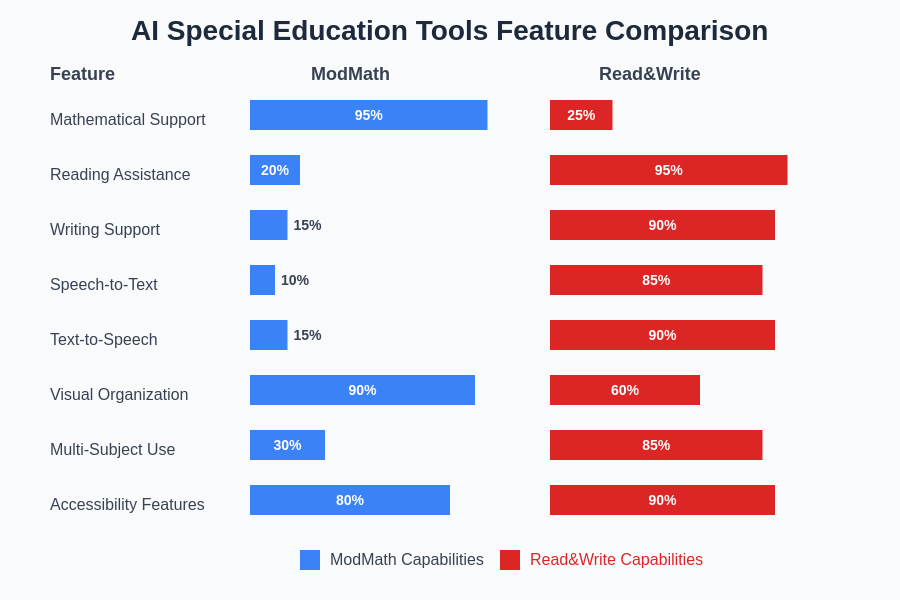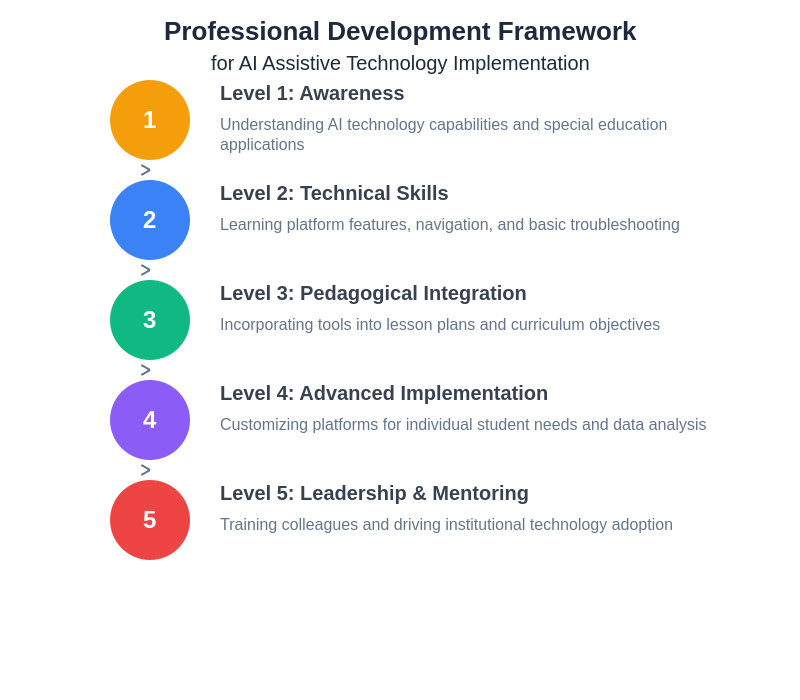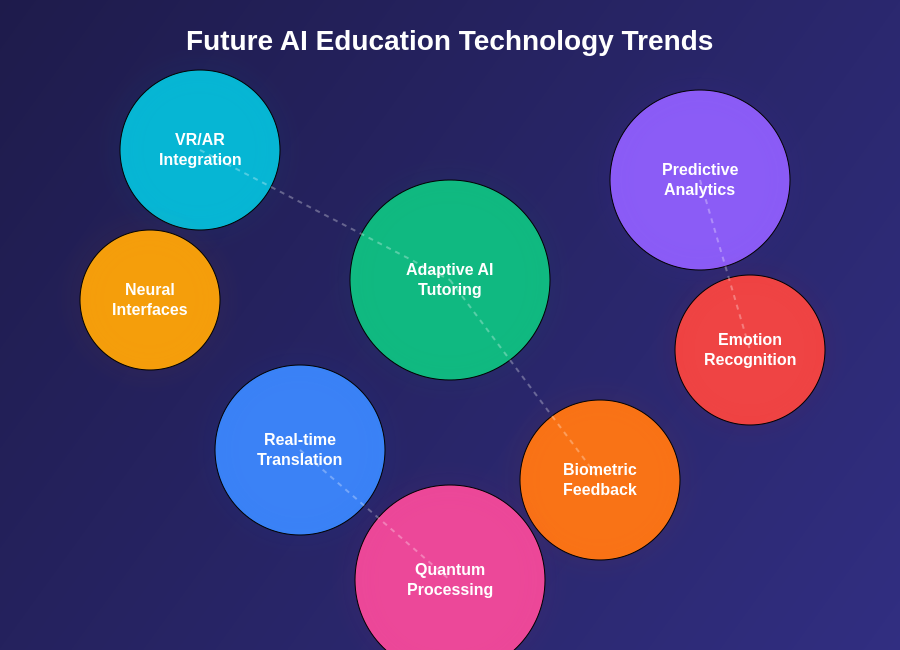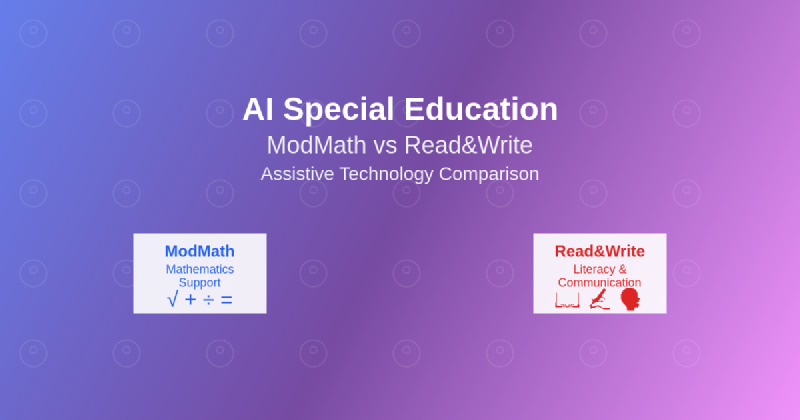The integration of artificial intelligence into special education has opened unprecedented pathways for supporting students with diverse learning needs, fundamentally transforming how educators approach individualized instruction and accessibility. Among the most prominent AI-powered assistive technologies making significant impacts in special education environments are ModMath and Read&Write, each offering unique approaches to addressing specific learning challenges while leveraging sophisticated artificial intelligence algorithms to create more inclusive and effective educational experiences.
Explore the latest developments in AI educational technology to understand how these innovations are continuously evolving to better serve students with special needs. The convergence of artificial intelligence and special education represents a pivotal moment in educational history, where technology serves not merely as a tool but as a transformative force that can break down barriers and unlock potential for students who have traditionally faced significant challenges in conventional learning environments.
Understanding AI-Powered Special Education Technology
The foundation of modern AI-powered special education technology rests upon sophisticated machine learning algorithms that can adapt to individual learning patterns, identify specific challenges, and provide personalized interventions that would be impossible to deliver consistently through traditional methods alone. These systems analyze vast amounts of student interaction data, learning preferences, and performance metrics to create highly individualized educational experiences that evolve in real-time based on student progress and needs.
The revolutionary aspect of AI in special education lies not only in its ability to provide immediate feedback and support but also in its capacity to identify subtle patterns in learning behavior that might escape human observation. By continuously monitoring student engagement, response times, error patterns, and learning trajectories, AI systems can detect early indicators of frustration, confusion, or disengagement, enabling proactive interventions that prevent academic struggles from escalating into more significant challenges.
This technological evolution has been particularly transformative for students with learning disabilities, autism spectrum disorders, attention deficit disorders, and other conditions that require specialized instructional approaches. The ability of AI systems to provide consistent, patient, and infinitely adaptable support creates learning environments where students can progress at their own pace without the anxiety or frustration that often accompanies traditional educational settings.
ModMath: Revolutionizing Mathematical Learning Support
ModMath represents a groundbreaking approach to mathematical education for students with learning disabilities, particularly those who struggle with traditional paper-and-pencil methods due to fine motor difficulties, spatial processing challenges, or organizational issues. This innovative platform transforms how students interact with mathematical concepts by providing a digital workspace that eliminates many of the physical and cognitive barriers that traditionally impede mathematical learning.
The core strength of ModMath lies in its sophisticated understanding of the various ways that learning disabilities can impact mathematical reasoning and problem-solving. The platform provides digital graph paper that automatically aligns numbers and mathematical symbols, eliminating the spatial challenges that often prevent students from accurately organizing their mathematical work. This seemingly simple innovation has profound implications for students whose mathematical understanding far exceeds their ability to express that knowledge through traditional written methods.
Discover advanced AI educational tools like Claude that complement platforms like ModMath by providing additional reasoning support and personalized learning assistance. The integration of multiple AI systems creates a comprehensive support network that addresses various aspects of the learning process, from basic skill development to complex problem-solving strategies.
Read&Write: Comprehensive Literacy and Communication Support
Read&Write stands as a comprehensive assistive technology platform that addresses the multifaceted challenges faced by students with reading, writing, and communication difficulties. This sophisticated system employs advanced natural language processing and speech recognition technologies to provide support across the entire literacy spectrum, from basic phonemic awareness to complex text comprehension and written expression.
The platform’s approach to literacy support recognizes that reading and writing difficulties often stem from multiple interconnected factors, including phonological processing deficits, working memory limitations, and executive functioning challenges. By providing simultaneous support across these various domains, Read&Write creates a scaffolded learning environment where students can access text content, organize their thoughts, and express their ideas without being limited by their specific learning challenges.
The text-to-speech functionality within Read&Write employs sophisticated AI algorithms that not only convert written text to spoken language but also adjust pacing, emphasis, and pronunciation based on individual student needs and preferences. This personalized approach to auditory support ensures that students receive information in the format that best matches their learning style and cognitive processing strengths.
Comparative Analysis of Core Features
When examining the fundamental capabilities of ModMath and Read&Write, it becomes evident that these platforms serve complementary but distinct roles within the special education ecosystem. ModMath focuses primarily on mathematical learning support, providing specialized tools for numerical manipulation, equation solving, and mathematical expression that are specifically designed to accommodate the needs of students with learning disabilities affecting mathematical reasoning and spatial processing.
The digital workspace provided by ModMath includes features such as automatic number alignment, symbol insertion tools, and step-by-step problem-solving guides that help students organize their mathematical thinking and express their understanding clearly. The platform’s AI algorithms analyze student work patterns and provide real-time feedback that helps identify common error types and suggests appropriate interventions or alternative problem-solving strategies.
Read&Write, in contrast, offers a comprehensive suite of literacy support tools that address reading comprehension, written expression, and communication skills across multiple subject areas. The platform’s AI-powered features include predictive text generation, grammar and spell-checking with contextual suggestions, vocabulary support with visual and auditory definitions, and organizational tools that help students structure their written work effectively.

The technological sophistication of both platforms reflects years of research into the specific ways that artificial intelligence can be leveraged to support students with diverse learning needs. While ModMath excels in providing mathematical support that addresses spatial, organizational, and fine motor challenges, Read&Write offers comprehensive literacy support that encompasses reading, writing, and communication across all academic subjects. This comparative analysis reveals the complementary nature of these platforms, with each excelling in specific domains while maintaining adequate functionality across other areas of academic support.
Implementation Strategies and Best Practices
Successful implementation of AI-powered assistive technology in special education requires careful consideration of individual student needs, institutional resources, and pedagogical approaches that maximize the benefits of these sophisticated tools. The integration process typically begins with comprehensive assessment protocols that identify specific learning challenges and determine which technological supports would be most beneficial for each student’s unique profile.
Professional development for educators plays a crucial role in successful implementation, as teachers must understand not only how to operate these platforms but also how to integrate them meaningfully into existing instructional frameworks. This requires training in both the technical aspects of the software and the pedagogical strategies that leverage AI capabilities to support diverse learning needs effectively.
The customization capabilities of both ModMath and Read&Write allow for highly individualized implementations that can be adjusted based on student progress and changing needs. This flexibility is essential in special education settings where student requirements may evolve significantly over time as skills develop and new challenges emerge.
Enhance your research capabilities with Perplexity AI to stay informed about the latest developments in special education technology and implementation strategies. Continuous learning and adaptation are essential for educators working with AI-powered assistive technologies, as these tools continue to evolve and improve based on user feedback and technological advances.
Student Outcomes and Effectiveness Metrics
Research into the effectiveness of AI-powered assistive technologies in special education has consistently demonstrated significant improvements in student engagement, academic performance, and self-confidence across diverse learning populations. Students using ModMath have shown marked improvements in mathematical problem-solving accuracy, reduced anxiety around mathematical tasks, and increased willingness to attempt challenging problems that they previously avoided due to organizational or spatial processing difficulties.
The measurable outcomes associated with Read&Write implementation include improvements in reading comprehension scores, increased volume and quality of written expression, enhanced vocabulary development, and improved performance on standardized assessments that require extensive reading and writing. Perhaps more importantly, students report increased confidence in their academic abilities and greater willingness to participate in classroom discussions and collaborative learning activities.
The long-term benefits of these technologies extend beyond immediate academic improvements to include the development of self-advocacy skills, increased independence in learning tasks, and improved preparation for post-secondary educational and employment opportunities. Students who have access to appropriate assistive technology supports often demonstrate better retention of learned skills and increased ability to generalize strategies across different academic contexts.
Accessibility and Universal Design Principles
Both ModMath and Read&Write exemplify the principles of universal design for learning by providing multiple means of representation, engagement, and expression that benefit not only students with identified learning disabilities but also those who may struggle with traditional instructional methods for various reasons. The accessibility features built into these platforms ensure that students with visual, auditory, or motor impairments can access and benefit from the AI-powered supports.
The customizable interface options available in both platforms allow for adjustments in text size, color contrast, audio settings, and navigation methods that accommodate diverse sensory and motor needs. These accessibility features are seamlessly integrated into the overall user experience, ensuring that accommodations do not create additional barriers or draw unwanted attention to individual differences.
The cloud-based nature of both platforms ensures that students can access their personalized learning environments from multiple devices and locations, providing consistency and continuity that is essential for students who require predictable and familiar learning contexts. This portability also facilitates collaboration between home and school environments, allowing for coordinated support across all settings where learning occurs.
Professional Development and Training Requirements
The successful integration of AI-powered assistive technology requires comprehensive professional development programs that address both technical competency and pedagogical implementation strategies. Educators must develop understanding of how these tools can be integrated into existing curriculum frameworks while maintaining focus on educational objectives and learning outcomes.
Training programs for ModMath typically focus on mathematical pedagogy for students with learning disabilities, effective use of digital mathematical tools, and strategies for supporting students in transitioning between traditional and technology-enhanced mathematical approaches. Educators learn to recognize when technological supports are most beneficial and how to gradually reduce dependence on these tools as student skills develop.
Read&Write training encompasses broader literacy instruction strategies, understanding of various reading and writing difficulties, and techniques for integrating assistive technology supports across multiple subject areas. Teachers learn to use the platform’s assessment and progress monitoring features to make data-driven decisions about instructional approaches and technological supports.

The ongoing nature of professional development in this field reflects the rapidly evolving capabilities of AI-powered educational technology and the need for educators to stay current with new features and implementation strategies that can benefit their students. This structured approach to professional development ensures that educators progress systematically from basic awareness to advanced implementation skills, ultimately becoming leaders who can guide institutional adoption and mentor colleagues in effective technology integration.
Cost-Benefit Analysis and Resource Allocation
Educational institutions considering the implementation of AI-powered assistive technology must carefully evaluate the financial investment required against the potential benefits for student outcomes and institutional effectiveness. The costs associated with ModMath and Read&Write include not only licensing fees but also hardware requirements, professional development expenses, and ongoing technical support needs.
The cost-effectiveness of these platforms becomes evident when considering the reduced need for one-on-one instructional support, decreased reliance on specialized personnel for routine accommodations, and improved student outcomes that may reduce the need for more intensive interventions. Many institutions find that the initial investment in AI-powered assistive technology results in long-term savings while simultaneously improving service delivery and student satisfaction.
Grant funding opportunities and special education budgets often provide pathways for institutions to implement these technologies without compromising other essential services. The key to successful resource allocation lies in strategic planning that considers both immediate implementation costs and long-term sustainability requirements.
Privacy and Data Security Considerations
The implementation of AI-powered educational technology raises important questions about student privacy and data security that must be addressed through comprehensive policies and technical safeguards. Both ModMath and Read&Write collect extensive data about student learning patterns, performance metrics, and usage behaviors that require careful protection and ethical management.
Educational institutions must ensure that data collection practices comply with relevant privacy regulations while maximizing the educational benefits of AI-powered personalization. This requires clear policies regarding data ownership, sharing, retention, and deletion that protect student privacy while enabling effective use of learning analytics for instructional improvement.
The transparency of data collection and usage practices is essential for maintaining trust among students, families, and educators. Institutions must provide clear information about what data is collected, how it is used to improve educational outcomes, and what protections are in place to prevent unauthorized access or misuse of sensitive information.
Future Developments and Emerging Trends
The rapid advancement of artificial intelligence technology promises continued improvements in the sophistication and effectiveness of special education assistive technologies. Emerging developments in natural language processing, machine learning, and adaptive algorithms will likely result in even more personalized and responsive educational supports that can address increasingly complex learning needs.
Future iterations of platforms like ModMath may incorporate advanced mathematical reasoning capabilities that can provide more sophisticated problem-solving support and mathematical tutoring. Similarly, Read&Write may evolve to include more advanced writing assistance features that can help students develop complex argumentation and analytical writing skills.
The integration of virtual and augmented reality technologies with AI-powered educational platforms represents another frontier that could provide immersive learning experiences particularly beneficial for students with certain types of learning disabilities. These technologies could offer new ways to visualize abstract concepts and provide hands-on learning experiences that were previously impossible in traditional educational settings.

The continued development of these technologies will require ongoing collaboration between technology developers, special education researchers, and classroom practitioners to ensure that innovations address real educational needs and improve outcomes for students with diverse learning challenges. These emerging technologies promise to create even more personalized and responsive educational environments that can adapt in real-time to student needs and provide unprecedented levels of support for learners with diverse abilities.
Conclusion and Implementation Recommendations
The comparison between ModMath and Read&Write reveals that both platforms offer valuable but distinct contributions to the field of AI-powered special education technology. ModMath excels in providing specialized mathematical support that addresses the unique challenges faced by students with learning disabilities affecting numerical reasoning and spatial processing, while Read&Write offers comprehensive literacy support that spans reading, writing, and communication across all academic subjects.
The decision between these platforms, or the choice to implement both, should be based on careful assessment of student population needs, institutional resources, and existing technological infrastructure. Many educational institutions find that a combination of specialized tools provides the most comprehensive support for diverse student needs while maximizing the benefits of AI-powered personalization and adaptation.
Successful implementation of either platform requires commitment to ongoing professional development, systematic evaluation of student outcomes, and continuous refinement of implementation strategies based on user feedback and emerging best practices. The investment in AI-powered assistive technology represents not only a commitment to improving current educational outcomes but also preparation for a future where technology-enhanced learning becomes increasingly central to educational practice.
The transformative potential of AI in special education extends far beyond the specific capabilities of any individual platform to encompass a fundamental shift toward more personalized, responsive, and inclusive educational approaches that recognize and support the diverse ways that students learn and demonstrate their knowledge. As these technologies continue to evolve, they promise to unlock educational opportunities for students who have traditionally faced significant barriers to academic success.
Disclaimer
This article is for informational purposes only and does not constitute professional educational or medical advice. The effectiveness of assistive technology tools may vary depending on individual student needs, implementation quality, and specific learning contexts. Educators and families should consult with qualified special education professionals when making decisions about assistive technology implementation. The views expressed are based on current understanding of AI educational technology and may not reflect the most recent product updates or research findings.
